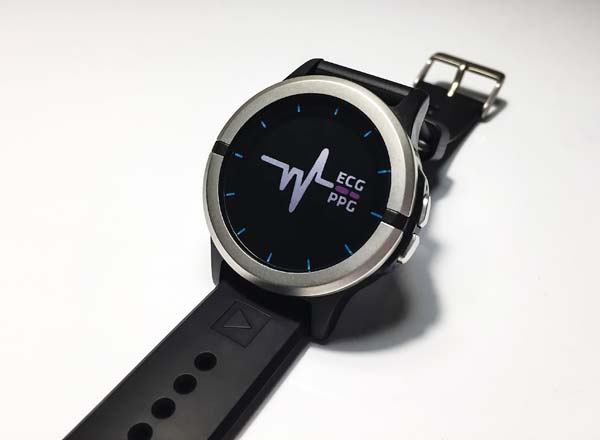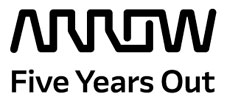Large-scale transformation in the way healthcare is delivered was already under way before the emergence of SARS-CoV-2, the virus that causes COVID-19, put new impetus into medical innovation. Prior to the 2020 pandemic, aging populations in developed nations, the near-universal availability of mobile broadband connectivity, and the development of sophisticated sensing technologies were propelling the adoption of more personalized, digital or remote methods of monitoring and diagnosing patients. As the coronavirus pandemic increases pressure on limited hospital facilities, medical service providers are accelerating the implementation of new technologies for testing and monitoring outside the hospital. Innovations in sensors now enable vital signs to be measured with clinical-grade accuracy at home and specimens tested at the point of care, eliminating the need to send samples for processing at a remote laboratory and producing quicker results for faster diagnosis.
This marks a break with decades-old standard medical operating procedure. In the conventional model of medical treatment, a patient visited the hospital when symptoms became apparent, or for a routine annual checkup, and was subjected to a one-time set of tests that would often be sent away for laboratory analysis before diagnosis or a health assessment was made. In many cases, this diagnosis would come long after the original consultation, and based on this single snapshot of the patient’s condition.
This approach to treatment made sense when the sophisticated equipment required to monitor vital signs and symptoms was scarce and only available in hospitals or other dedicated medical facilities.
The development of new medical sensing technology has created the conditions for a radically different conception of medical treatment. Instead of the large, fixed medical monitoring equipment used in hospitals, the new approach to patient monitoring uses devices that:
- Are small or even wearable
- Consume little power, so they can operate from a battery
- Provide accurate, clinical-grade measurements
This enables medical monitoring and testing to be taken out of the hospital and performed in local facilities such as GP practices or in a patient’s home. For even greater convenience for the patient, wearable devices such as patches can operate continuously and discreetly to enable 24/7 monitoring anywhere.
Better Diagnosis by Monitoring in Real Life
The motivation to implement new remote monitoring technologies is partly due to resource scarcity. The pressure on hospitals when COVID-19 infections peaked in 2020 proved that healthcare systems can quickly be overwhelmed by a rise in demand for acute care services. So, it is a sensible long-term strategy to relocate patients who require monitoring of vital signs from a hospital bed to a clinic, or to their own home.
But just as importantly, monitoring with a portable or wearable device can provide more useful data and produce better patient outcomes. New medical monitoring technology allows for extended tracking of vital signs such as heart rate, heart rate variability, blood oxygen saturation (SpO2), and temperature. Through continuous monitoring, trends and patterns can be uncovered that cannot be detected in the single snapshot that a practitioner can capture in one appointment with a patient. The development in parallel of artificial intelligence (AI) diagnostic technology means that monitoring the stream of data can be automated.
Instead of swamping the patient’s physician with data, this AI-based approach uses technology to monitor the patterns in vital signs in the background, and only raise a flag when personal intervention by a doctor is required. By detecting precursor signals that indicate future morbidity, the patient and medical practitioner can work together on changes to medication, lifestyle, or diet to prevent the onset of conditions that previously would have ended up in a visit to a hospital’s acute care ward.
In addition, monitoring at home or at a point-of-care facility reveals information about the state of the patient’s health in real life, not in the artificial, and often stressful, setting of a hospital ward. The latest multiparameter wearable sensors can combine vital signs with measurement of other indicators such as motion and sleep to put the medical data in the context of the patient’s lifestyle.
New Breakthroughs in the Application of Semiconductor Technology
The introduction of this new mode of patient monitoring is the result of a series of developments in semiconductor technology and computer science in the 21st century.
In the field of optoelectronics, optical sensor solutions have been developed that can perform photoplethysmography (PPG), which leverage noninvasive optical methods to calculate the heart rate, respiration rate, and SpO2. Miniature MEMS motion sensors likewise can measure patient activity, such as exercise sessions and sleep quality, to put vital signs in context.
In hospitals, much of the equipment used for monitoring vital signs is bulky and power hungry. By implementing this measurement capability at chip scale, semiconductor manufacturers such as Analog Devices make it possible to create products such as medical patches applied to the skin that can operate on battery power for days or weeks while transmitting measurements wirelessly to a host device such as a smartphone. Via this host, the measurements can be uploaded securely to a cloud diagnostics service that can turn a stream of raw electrical signals into medically actionable data.
Technology Expertise Meets Application Know-How
It’s one thing to be able to describe the functional requirements of the semiconductor and computing systems that enable patients to wear a smart watch or a patch for monitoring their vital signs. It is quite another to implement solutions using these technologies in an actual product.
At Analog Devices, we recognize that our service to healthcare technology innovators might start with semiconductor technology, but it cannot end there. That’s why we support customers with a combination of technical experts and domain specialists in the medical market.
It is the job of the medical domain experts to understand intimately the application requirements, and key attributes, such as regulation and data privacy, that characterize the market. Customers developing complex medical products can innovate faster, with more freedom and greater confidence of a successful outcome when they are supported by experts who understand not only their technology but also their application.
In the field of vital signs monitoring, this application expertise is backed by development platforms. The vital signs monitoring (VSM) study watch, for instance, is a multiparameter open development platform. Featuring a suite of sensors in a convenient wearable form factor, it provides a continuous set of vital signs measurements for use in the development of biomedical algorithms.
The VSM study watch implements PPG and ECG to measure heart rate and heart rate variability. Its MEMS accelerometer performs step counting and is used to improve and inform algorithms sensitive to motion artifacts. Sensors on the watch measure temperature and impedance, values used in algorithms to monitor stress and body composition. These capabilities support research carried out by medical and academic institutions to evaluate new use cases for remote patient monitoring.
The rewards of moving patient monitoring out of the hospital are clear. Drawing on precise, low power, miniature components such as sensors, analog-to-digital converters, and digital signal processors, the robust VSM watch from Analog Devices and other such development platforms lay the groundwork on which innovative medical device manufacturers can build the monitoring devices of tomorrow.
Author:
Giuseppe Olivadoti
Marketing and Applications Director (Digital Healthcare)
About the author: Giuseppe Olivadoti joined Analog Devices in 2000. During his time at ADI he has held a number of positions across engineering, sales, and business leadership. Giuseppe is currently the director of marketing and applications for the Digital Healthcare Business Unit at Analog Devices. Prior to this role, he has held sales leadership positions in Europe and the Americas.
Giuseppe holds a Bachelor of Science degree in electrical engineering from Northeastern University and a Master of Business Administration from University of Phoenix. Giuseppe currently resides in the Boston area. He can be reached at giuseppe.olivadoti@analog.com
Visit: https://ez.analog.com
Contact România:
Email: inforomania@arroweurope.com
Mobil: +40 731 016 104
Arrow Electronics | https://www.arrow.com




